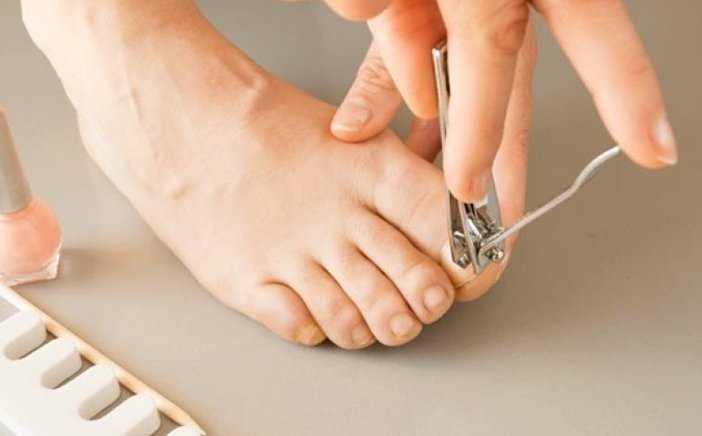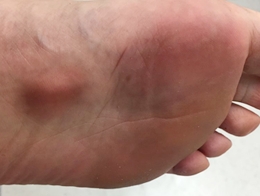Toenail Removal

Are you thinking of toenail removal as a permanent solution to the distress you are facing with your painful toenail that has refused to heal? Is your toenail hurting so much that you feel like pulling it off? Are you facing the embarrassment of a smelling toe resulting from suppuration due to an ingrowing toenail? Well, you need not worry so much anymore. We are here to help you out. What you need is toenail removal that can help solve the problem once and for all, so that you can be free from the troublesome pain and permanently have your peace.
But why should you need a toenail removal? Toenails are removed for different reasons. But the basic reason why a lot of people do so is because of issues with the toes which have defied normal medical treatments.
Procedure for Toenail Removal
Toenail removal is surgical removal or excision of a part of an ingrown toenail in order to cut off the affected part and allow the nail to grow back without eating deep into the surrounding skin anymore. In this case, the pain is also taken care of.
Usually, there is a partial removal of a part of the edge of the nail so that the offending organism can be removed and the nail given a fresh start. Most times, it is the best way of proffering a permanent solution to the problem of an ingrowing toenail. But how is toenail removal done?
Toenail removal involves injecting the affected part of the toe with a local anesthesia in order to kill pain. The surgeon or podiatrist then proceeds to carry out a surgical operation known as ‘Onychectomy’, in order to excise or cut out the portion of the nail growing along the edge of the toe (ablation). The procedure is quite simple and takes between thirty to forty-five minutes to accomplish. The procedure does not require many equipment; just a few things are needed. It doesn’t cost much to get the surgery done since it is a simple procedure.
The infected piece of toenail is pulled off and if there is any infection, it is surgically drained. This whole process is known as ‘Wedge resection’ or simple surgical ablation, and it is non-permanent because it allows the nail to regrow from the matrix. Nevertheless, a complete removal (avulsion) of the toenail may be advised in extreme circumstances.
In some cases, the surgeon removes both sides of the nail, even though only side is affected by the ingrown toenail. He then treats the edges with a chemical in order to prevent them from further growing. One of the chemicals used for this growth control is phenol.
After the surgery, you can be discharged from the hospital immediately and allowed to go home. But the surgeon may place you on a few antibiotics treatment in order to prevent infection of the affected part or to control secondary infection which may already there. The healing time usually takes about 4 – 6 weeks. During this period, a nail varnish or ‘Fake nail’ can be used to temporarily provide a normal look for the nail.
The nails will usually regrow in a few cases. When this happens, the physician will need to carry out a more invasive surgery on the nail in order to proffer a permanent solution to the recurring problem.
Some of the major complications that could occur following surgery include secondary infection and disfigurement of the re-grown toenail. Hence care must be taken in order to avoid any form of infection that could cause further damage to the nail.
The Syme Procedure
The Syme procedure is employed when there is recurrent ingrown toenail (Onychocryptosis), persisting symptoms and the patient asks for a permanent surgical solution. An experienced surgeon would have to carry out a simple ‘Avulsion procedure’ on the nail. The surgeon simply carries out a procedure that involves the nail matrix removal with skin flap transfer, and phalanx partial osteotomy. The wound is then stitched.
Recovery Time
Recovery takes place between 4 and 6 weeks. During the first few days, you can rest the affected toe and elevate it on a pillow in order to minimize swelling. This also aids drainage and hastens healing. You may not be able to walk about for the first three or four days. Trying to walk long distances could produce a sharp and unbearable pain. It is therefore, advisable to take a few days off in your office in order to enable you rest the leg for those first three or four days.
Whereby there are no complications or secondary infection to deal with, recovery should be complete in 4 to 6 weeks and everything is okay again.
Recovery is aided by the use of antibiotics medication to combat an existing secondary bacterial infection. Besides, Antifungal drugs or creams can be prescribed by the physician, in order to help control any infection caused by fungus. In addition to these, pain killers will go a long way at reducing pain and assisting you to start walking as soon as the second or third day after the surgery.
Before and after the surgery, a few steps have to be taken because of the significant roles they play in encouraging early recovery. These include, walking less distances about three days before and after the surgery, making sure the gauze dressings are changed daily to maintain a clean wound, removing the stitches (sutures) about 15 days after the surgery, etc.
Reasons for Toenail Removal
Ingrown toenail is not the only reason why you need toenail removal. There are other reasons to do so. So what are those reasons? You may ask.
- Ingrown toenail
- Fungal infection of the toenail
- Nail trauma
- Ingrown toenail with symptoms such as severe pain, swelling and overgrowth of surrounding tissues.
Aftercare
Aftercare of the wound involves a few essential things. You need to:
- Change the wound dressings and apply new sterile gauze daily
- Avoid soaking the wound in water
- Do not trim the nails round the corners too short
- Avoid any trauma to the nail
- Take your prescribed medication
- Apply topical antibiotics twice daily until the wound is totally healed.
- Avoid scratching the wound even though it is itchy. Itching can occasionally occur with wound healing.
Conclusion
Ingrowing toenail is such a challenge that comes with excruciating pain, swelling of the toes, inability to wear shoes or walk properly, and a few other symptoms. However, with toenail removal, the situation can be remedied and the sufferer returns to normal life devoid of pains.





